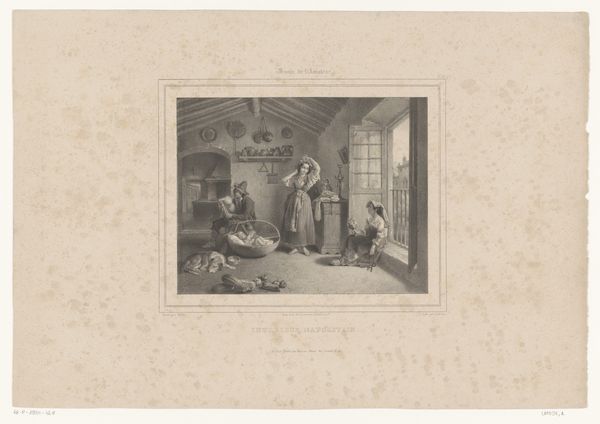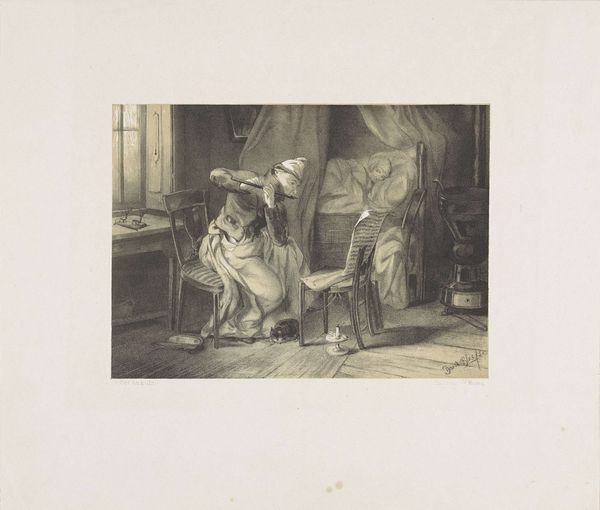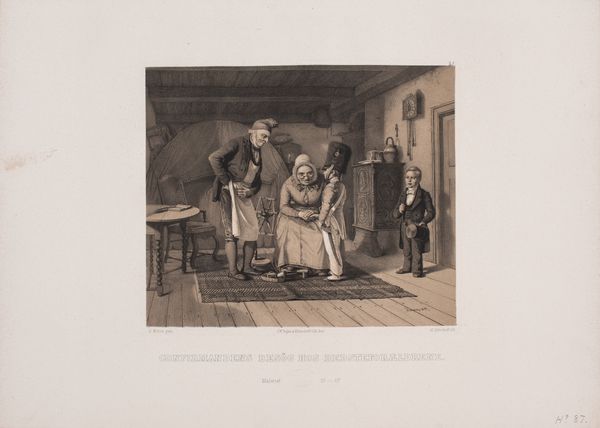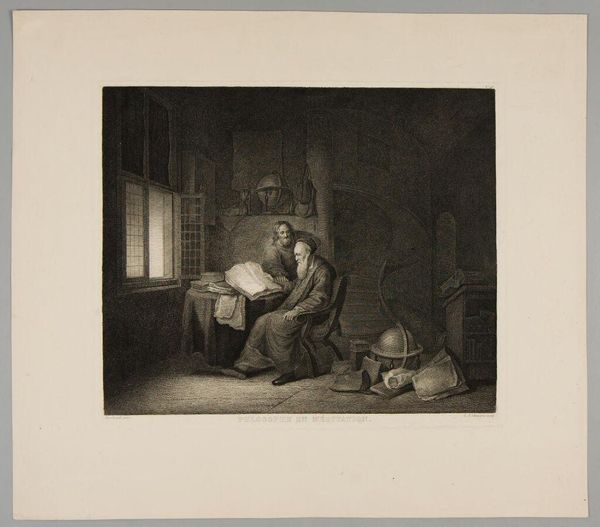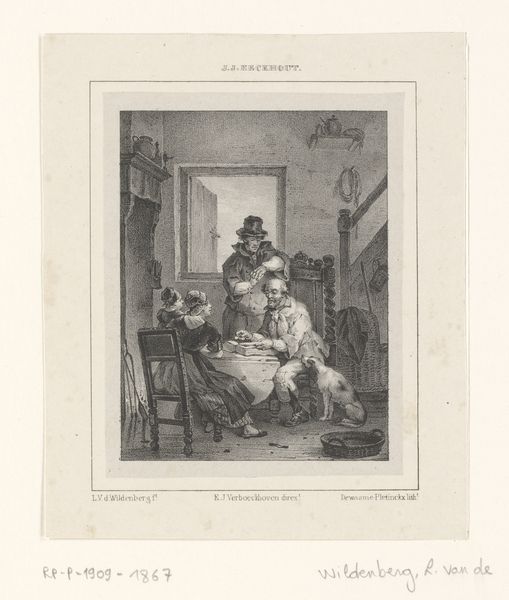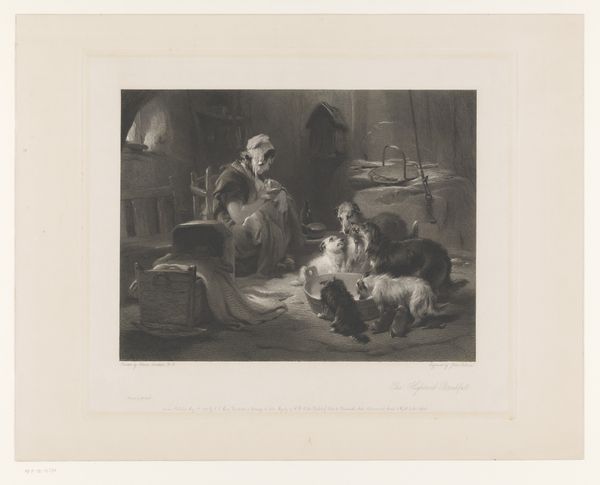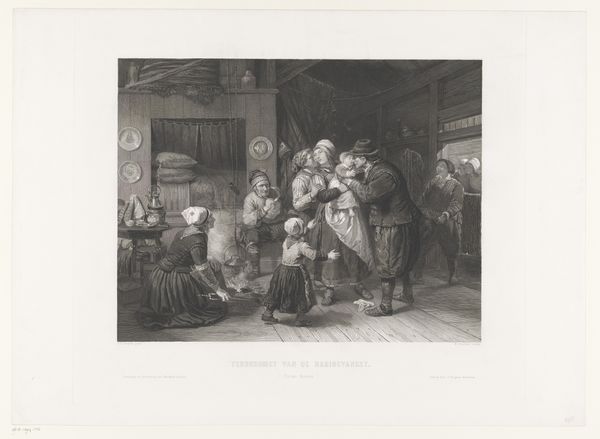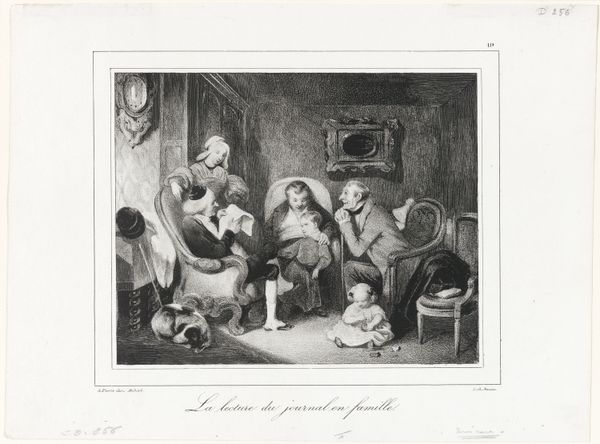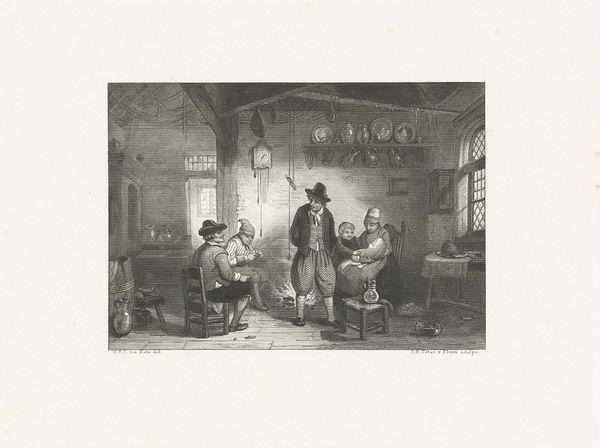
lithograph, print, etching
#
narrative-art
#
lithograph
# print
#
etching
#
light coloured
#
pencil drawing
#
genre-painting
#
realism
Dimensions: 287 mm (height) x 400 mm (width) (billedmaal)
Editor: Here we have "Bedstemoderen og den lille Abate," or "Grandmother and the Little Abbot," from the 1880s, by Adolph Kittendorff. It’s a lithograph, an etching, and a print all in one, which is fascinating. It feels very intimate and almost theatrical to me; like a scene from a play. What do you see in this piece? Curator: The theatrical feeling arises, I think, from the way the light isolates the grandmother and boy in the foreground, almost staging them for our view. The artist is engaging with familiar symbols here. Notice the grandmother: the apple she holds might reference knowledge or temptation. Then we have the little abbot with the large hat and books. Does the hat signify religious authority or perhaps just boyhood play, and are those actual books he’s carrying or simply props? Editor: That’s a great point about the apple; I hadn’t considered that. And yes, the hat and the books...perhaps the artist is contrasting the innocence of childhood with the weight of knowledge or societal expectations? Curator: Exactly. And what of the woman in the background, tending to what appears to be an invalid? How does she relate to the figures in the foreground? Is Kittendorff drawing parallels between the cares of old age and the expectations placed on the young? It becomes a story about cycles and roles within a family. Editor: I see what you mean. It is like two separate, simultaneous narratives happening at once. Thanks! I find that incredibly helpful in understanding the work’s complexities. Curator: And seeing those potential complexities hopefully draws the viewer in, sparking a connection to this tableau. Recognizing and understanding symbols, both religious and secular, truly unlock its rich emotional and narrative depths.
Comments
No comments
Be the first to comment and join the conversation on the ultimate creative platform.


